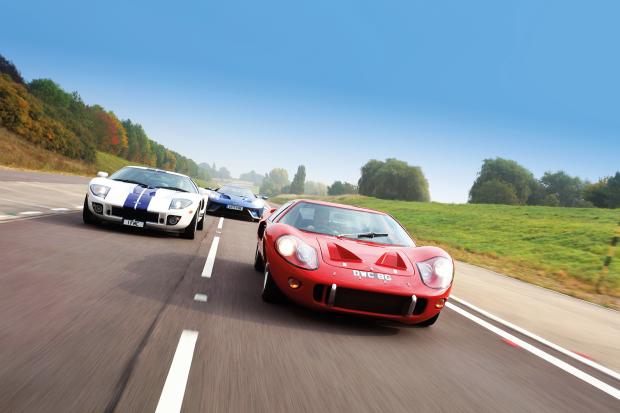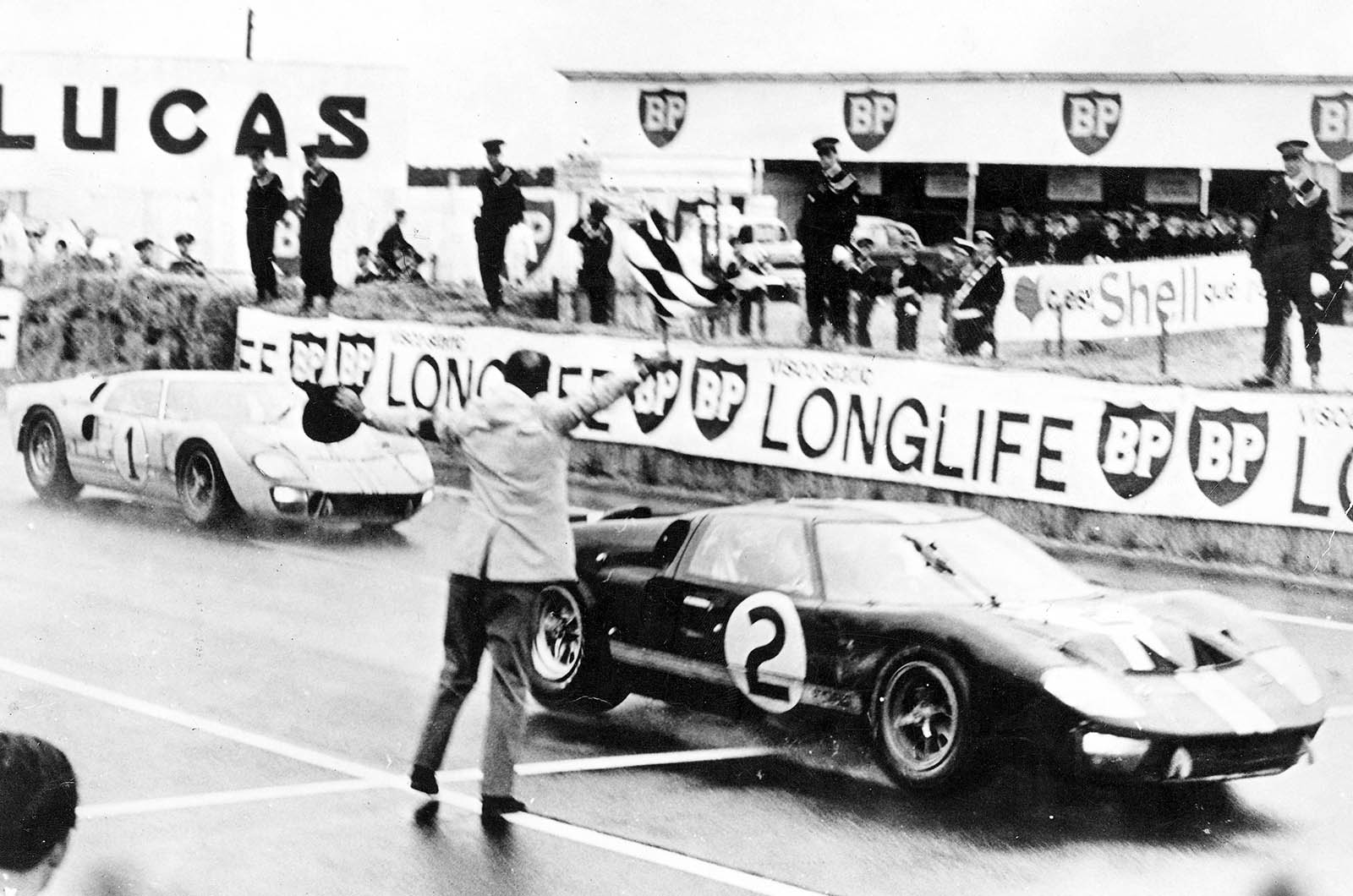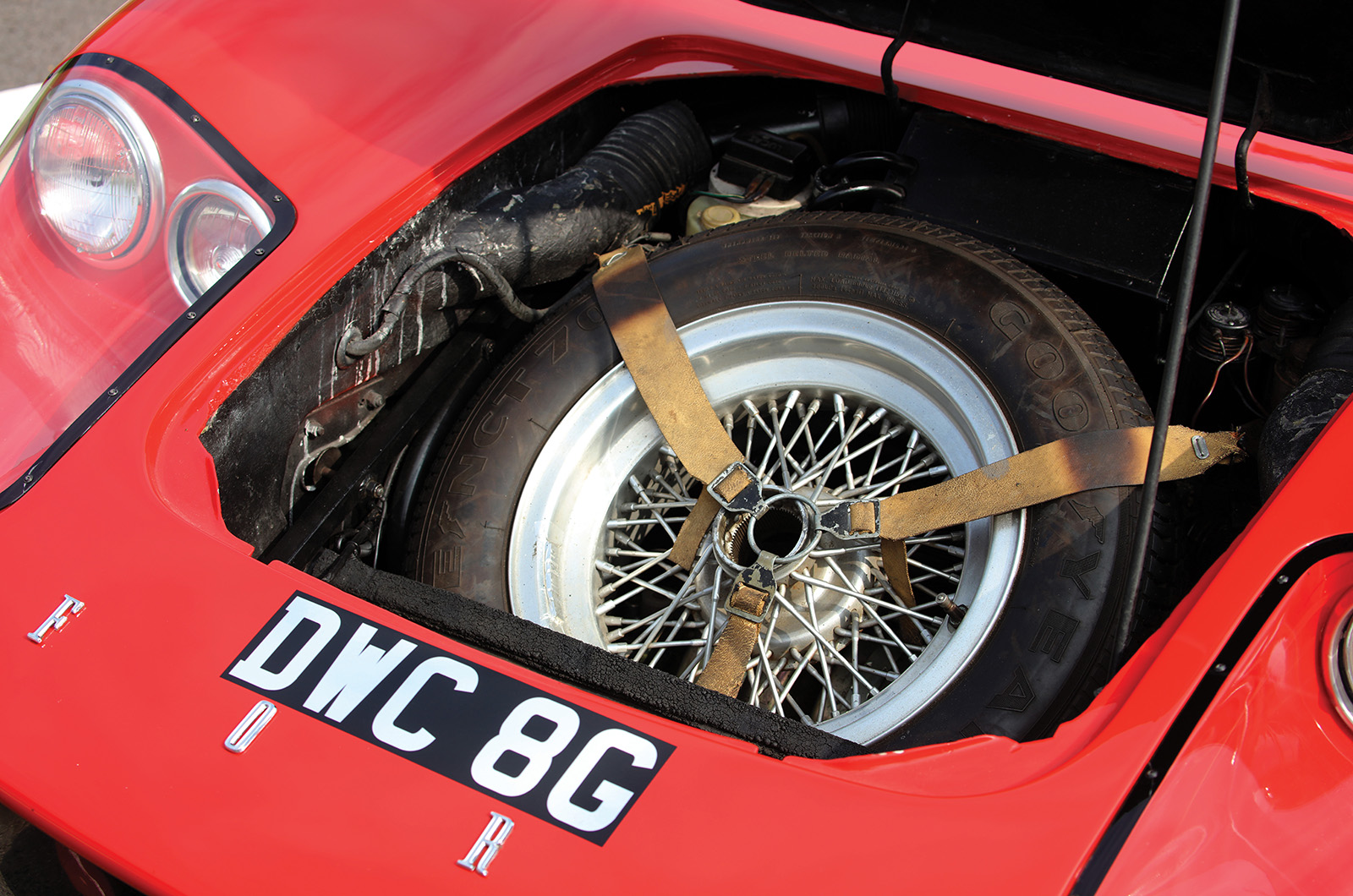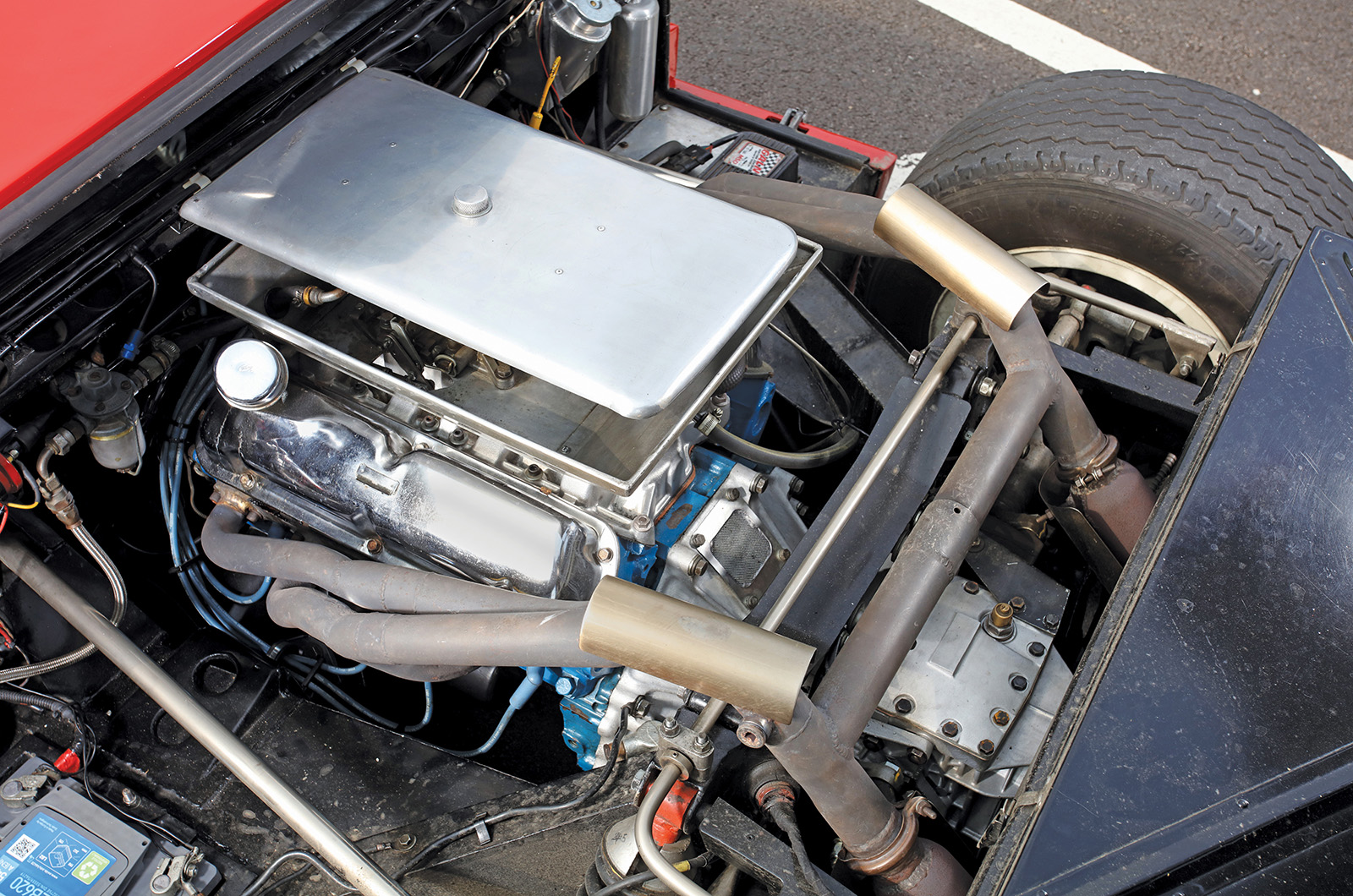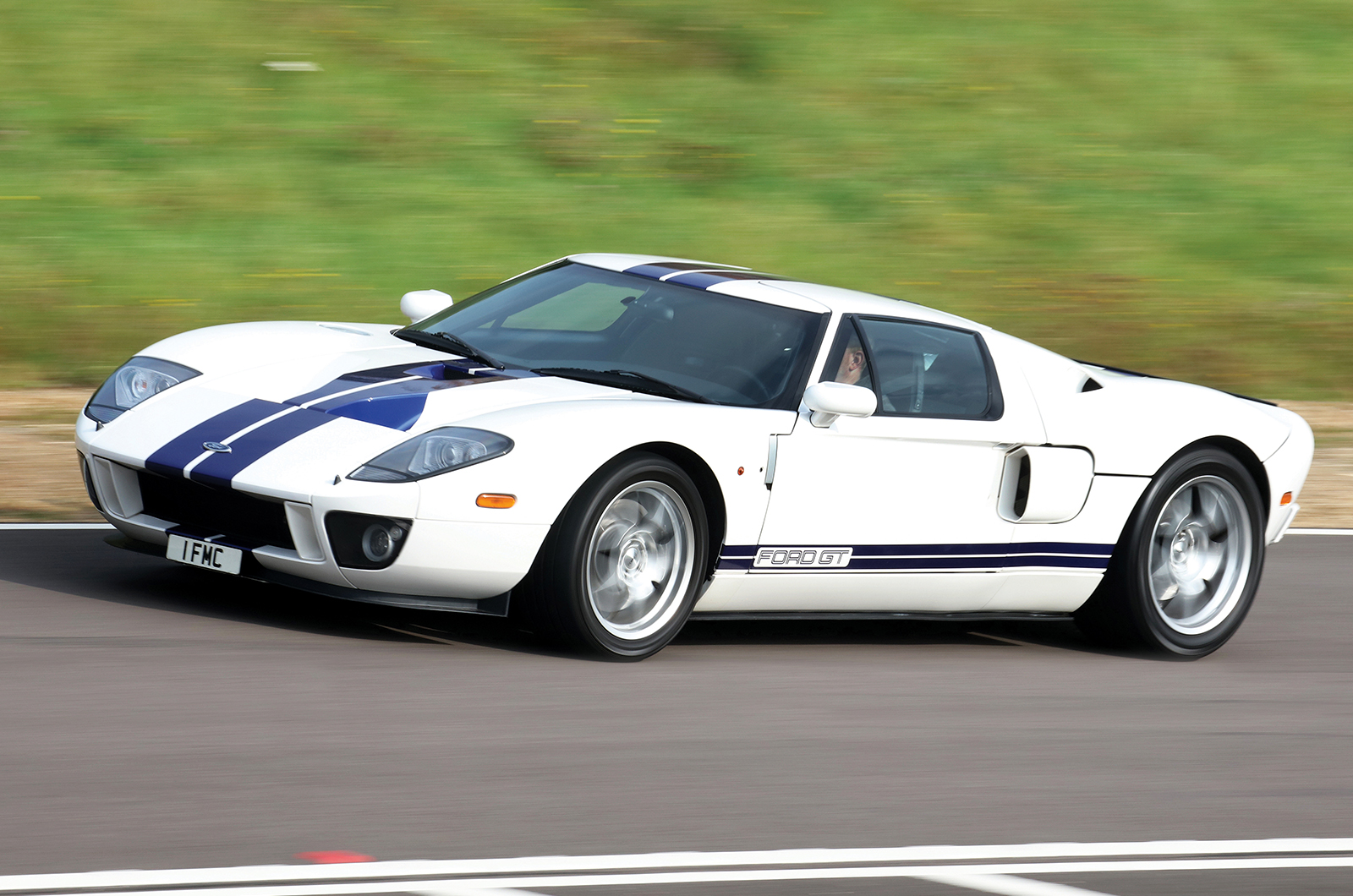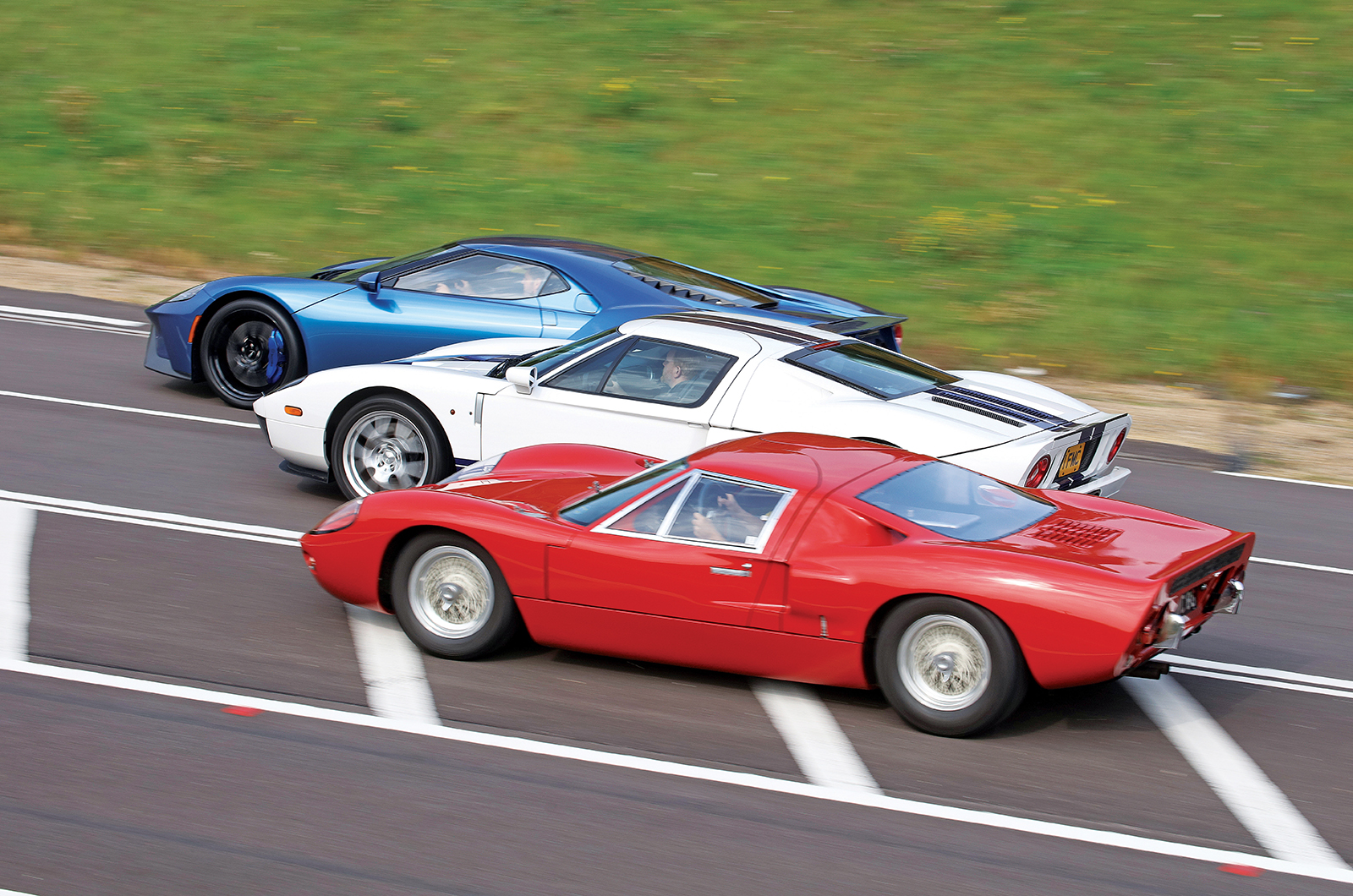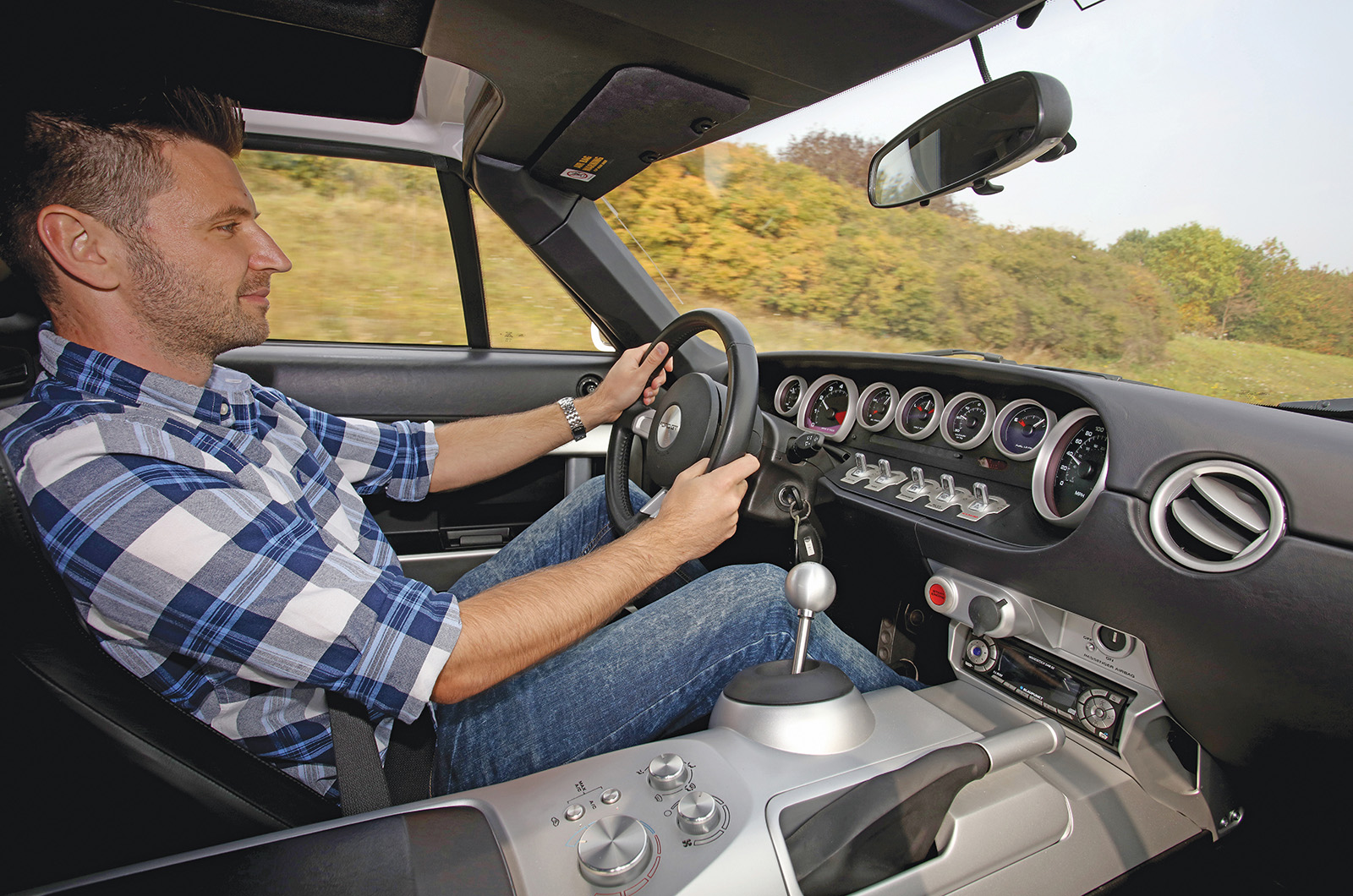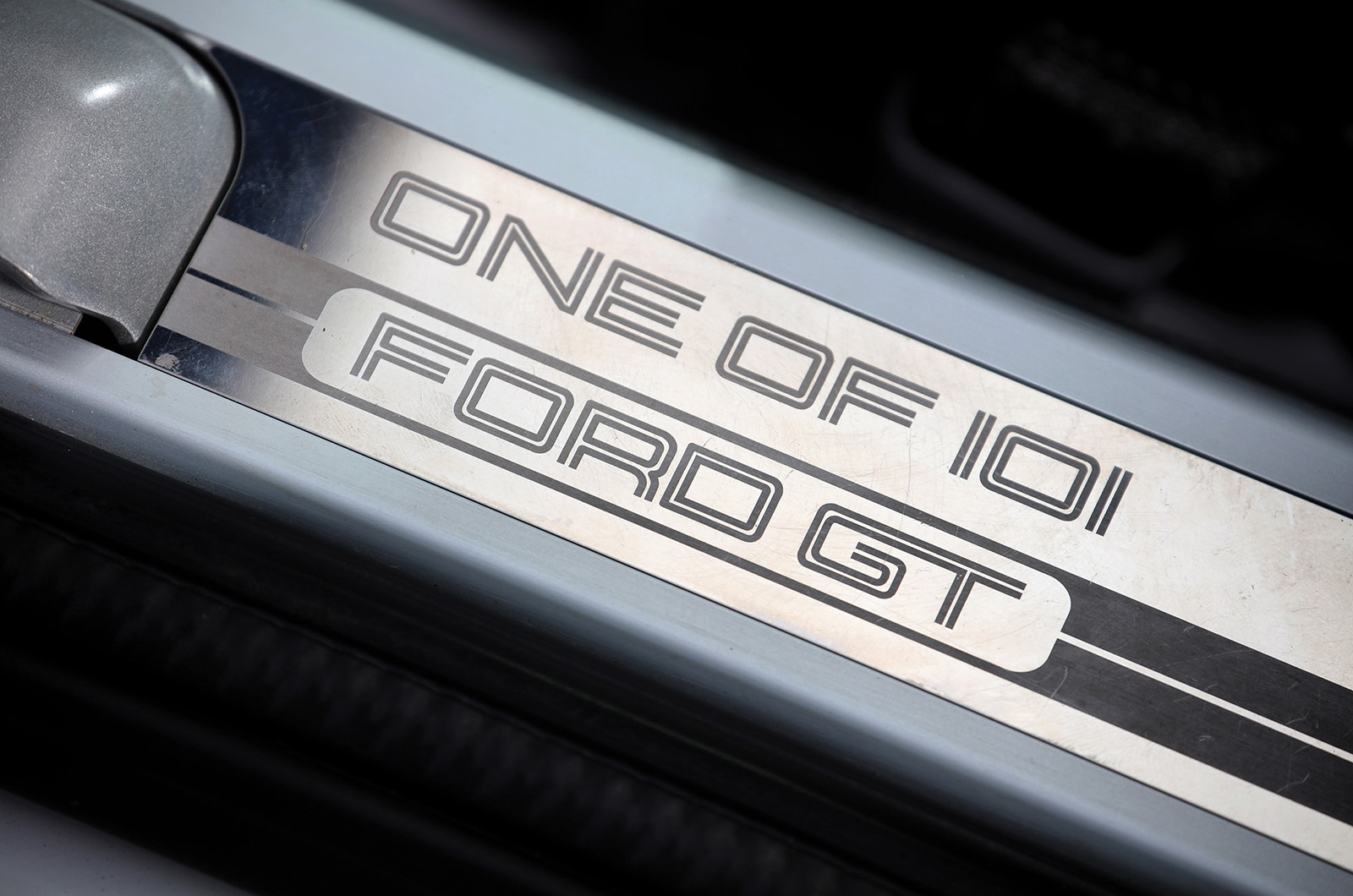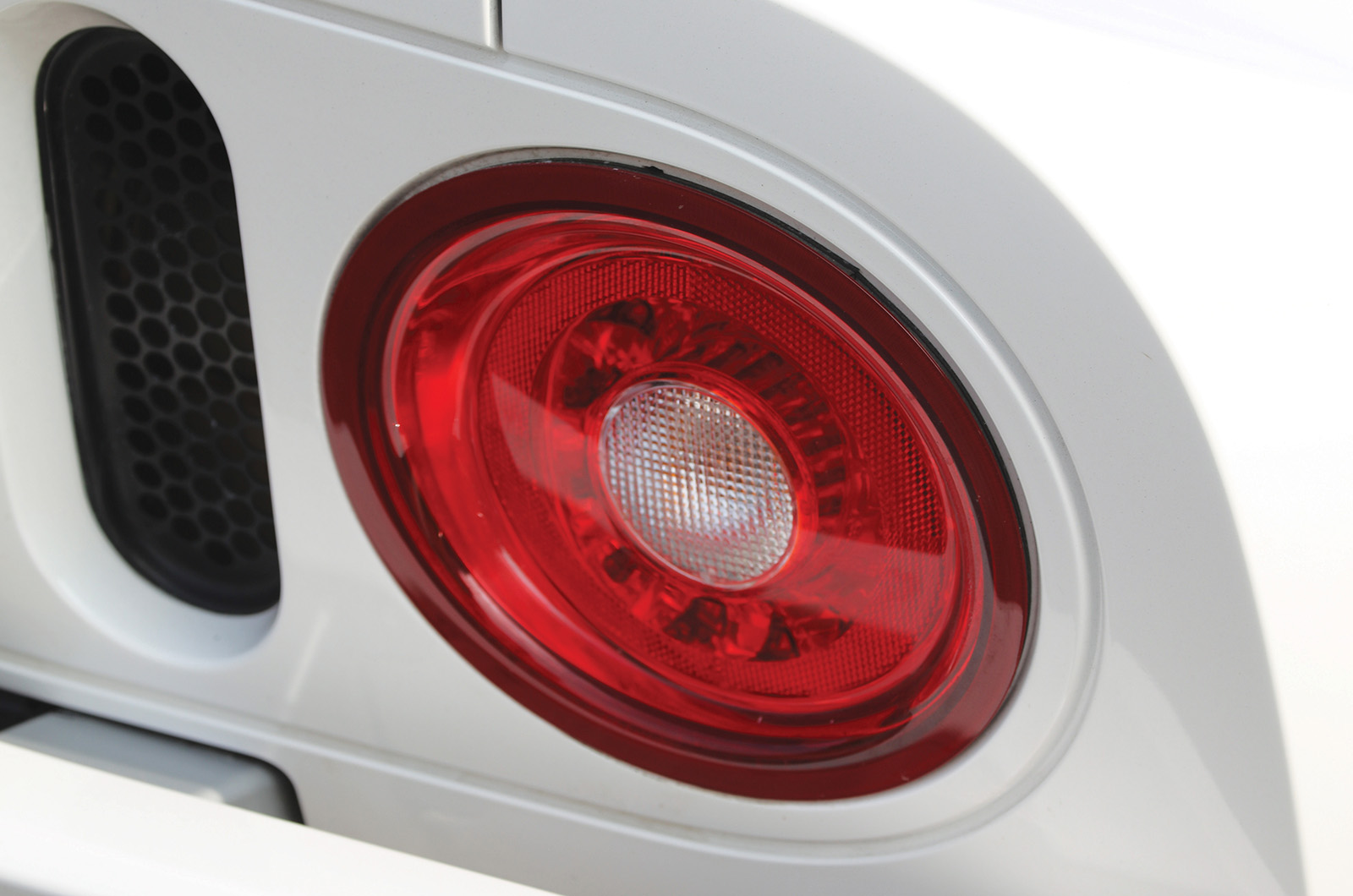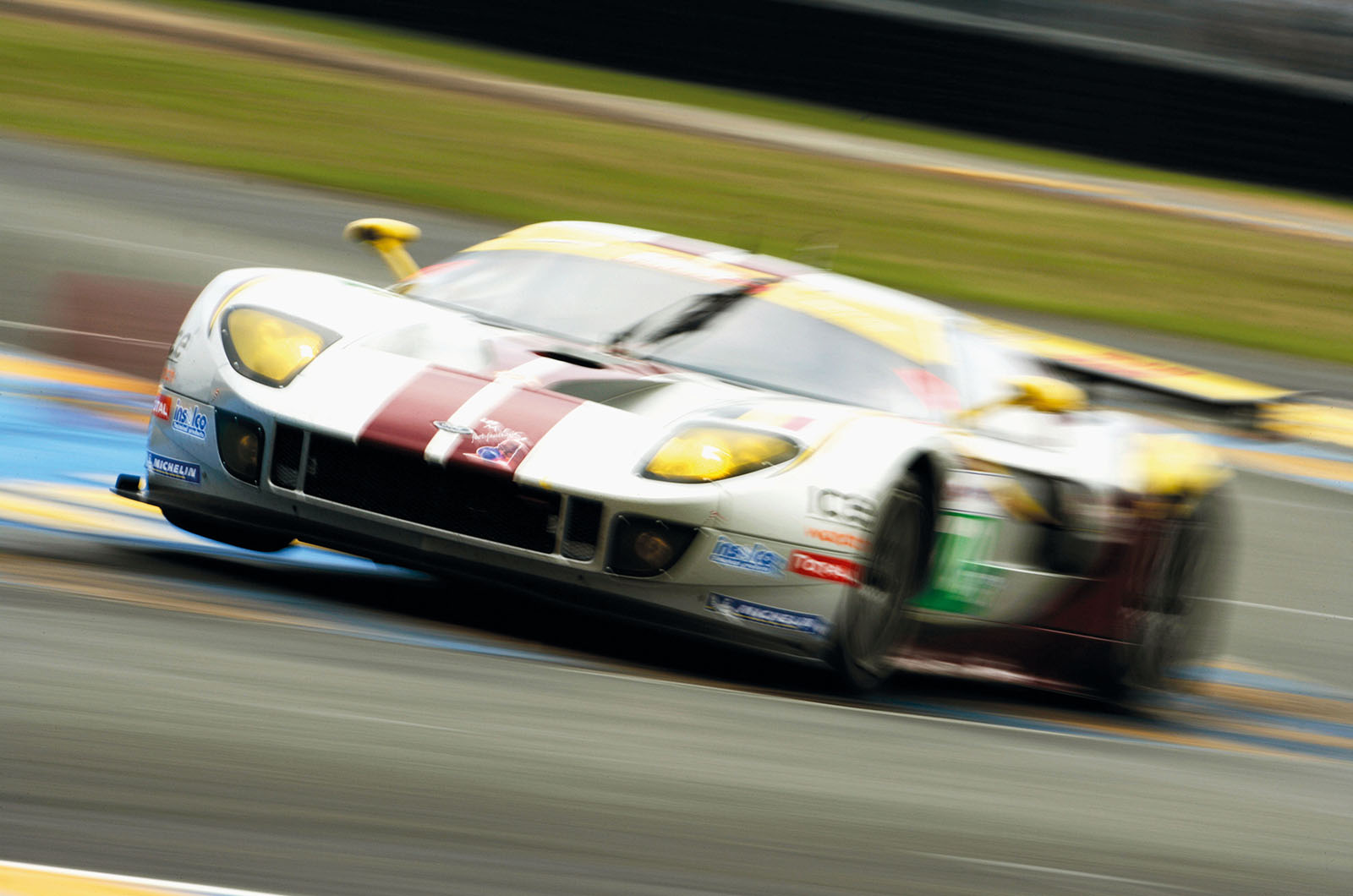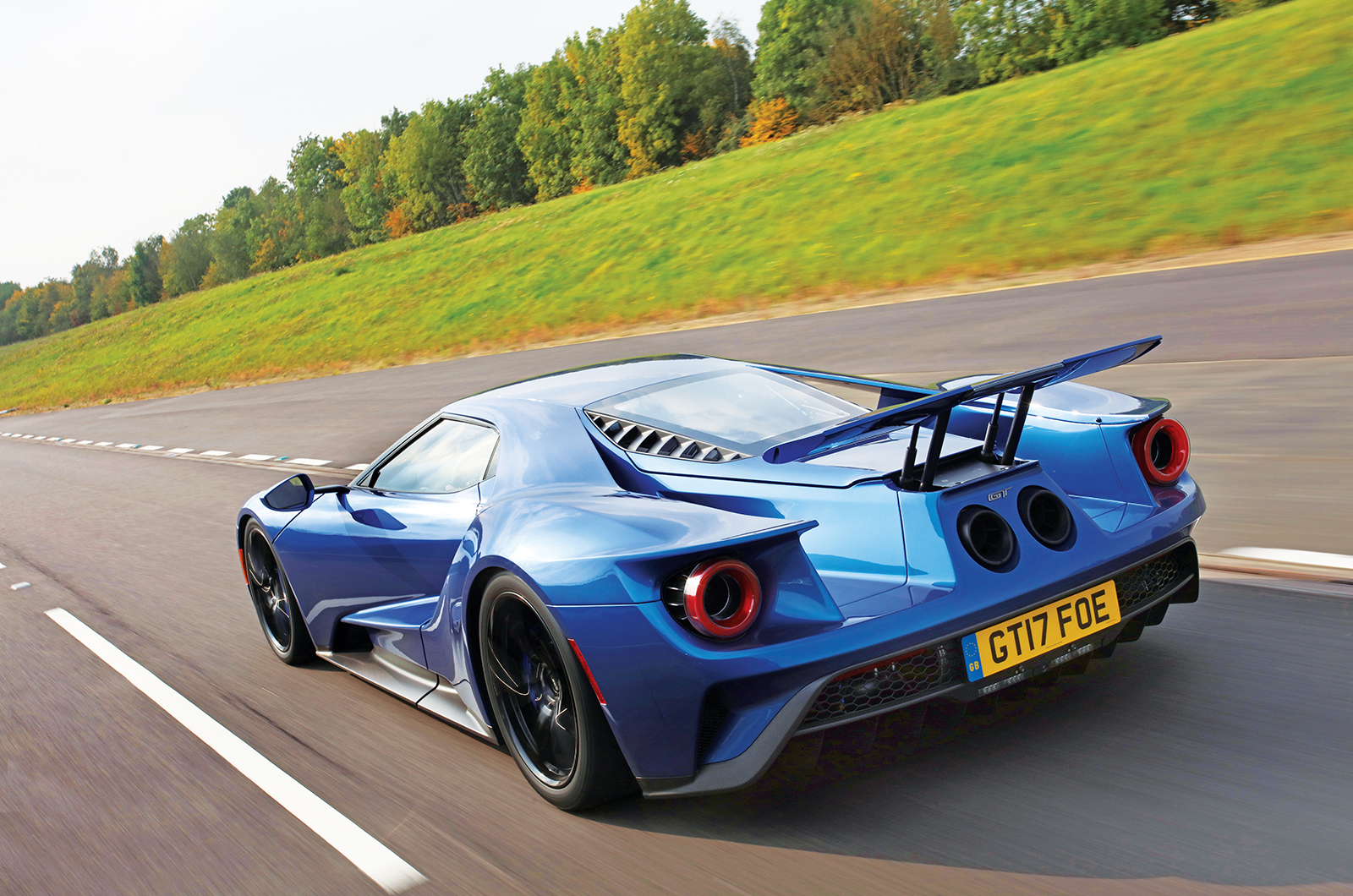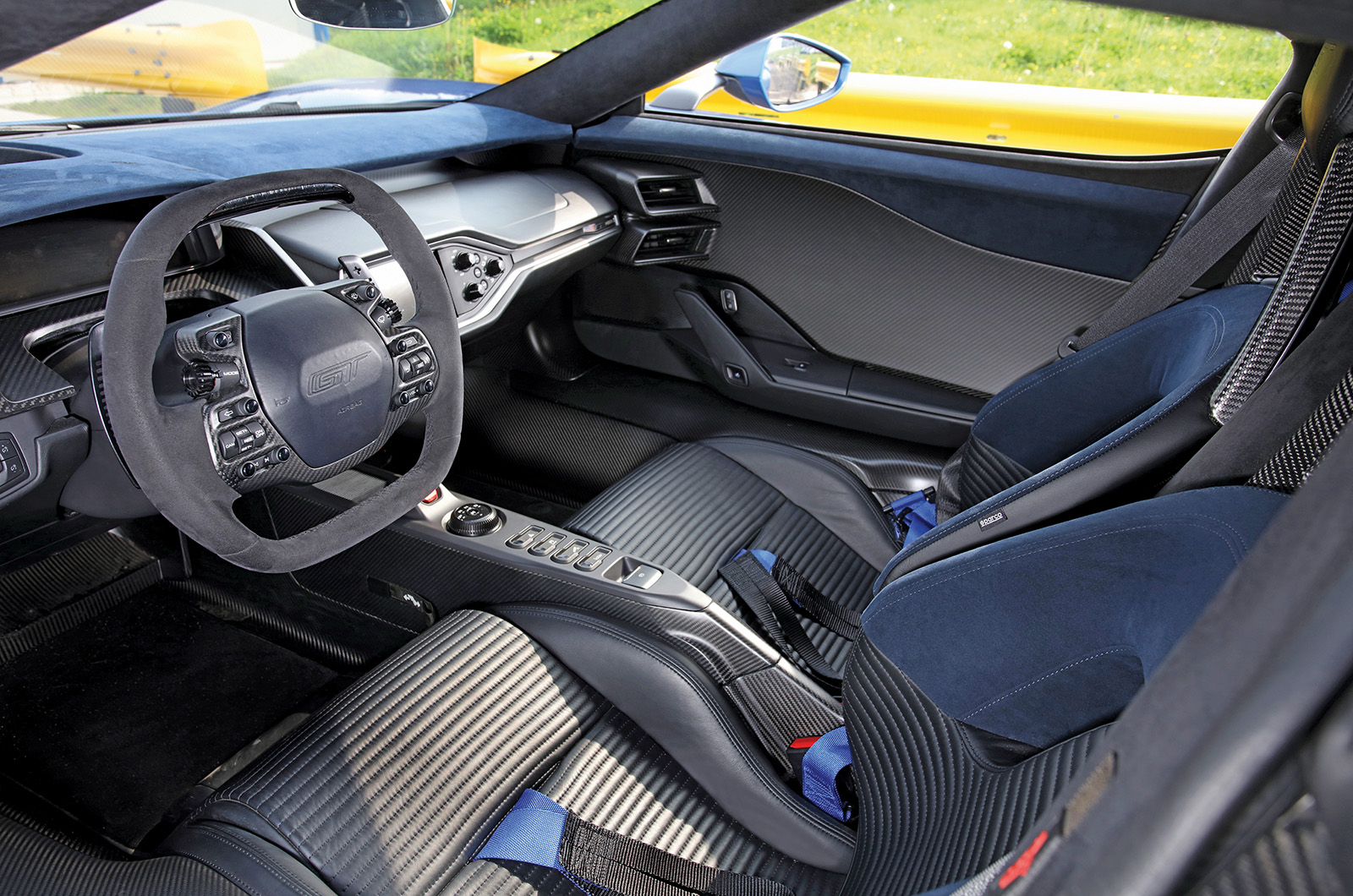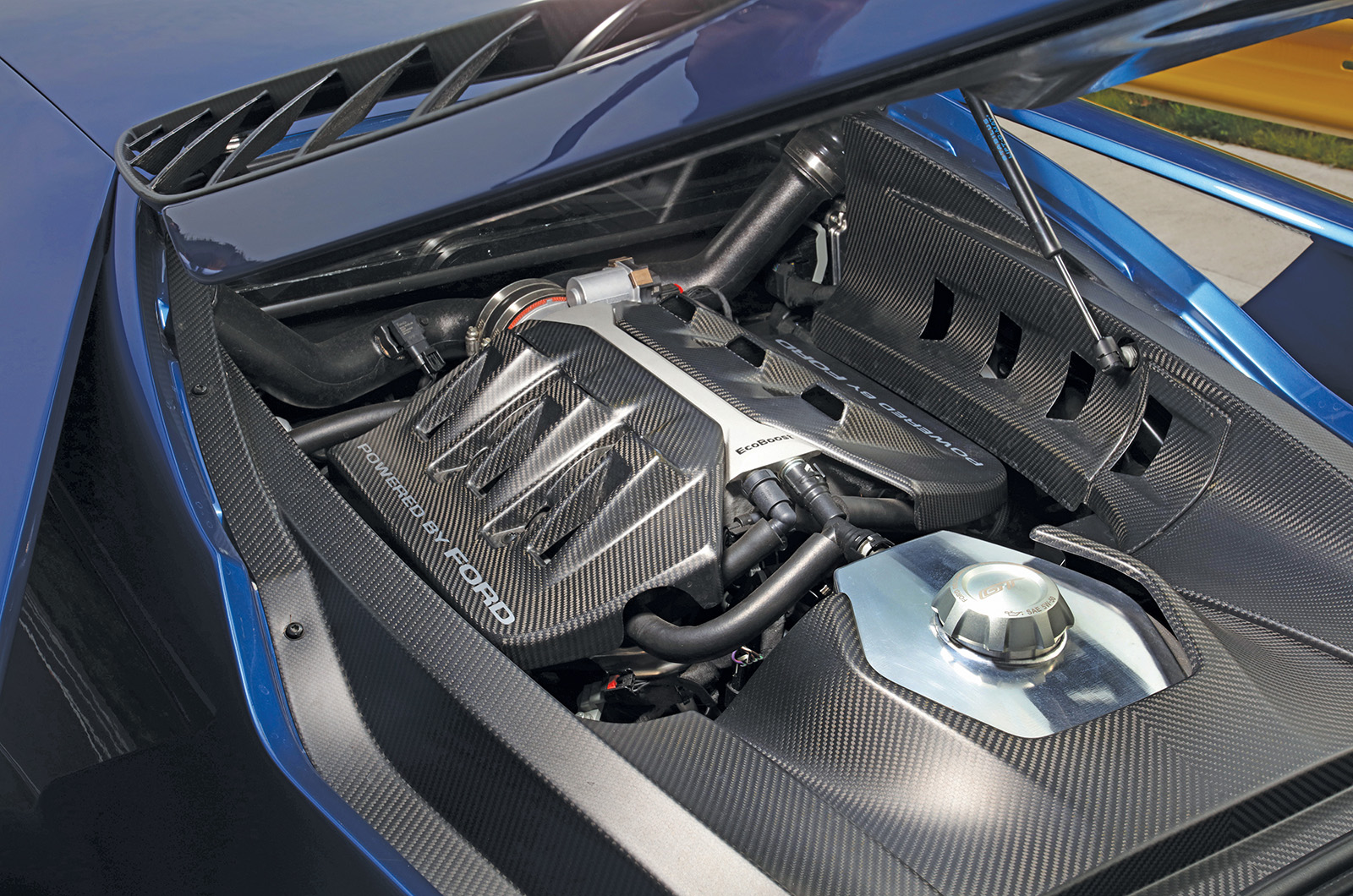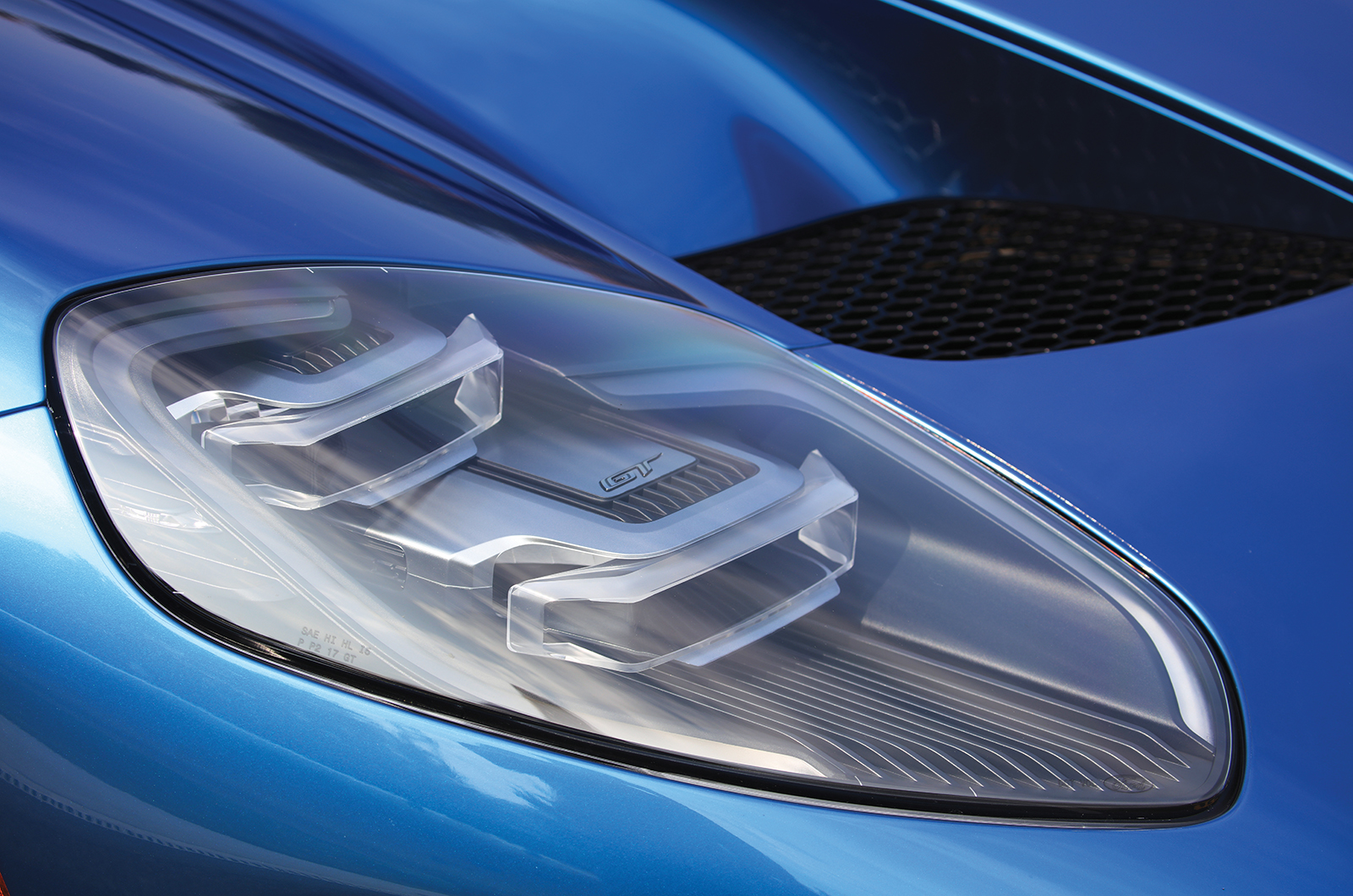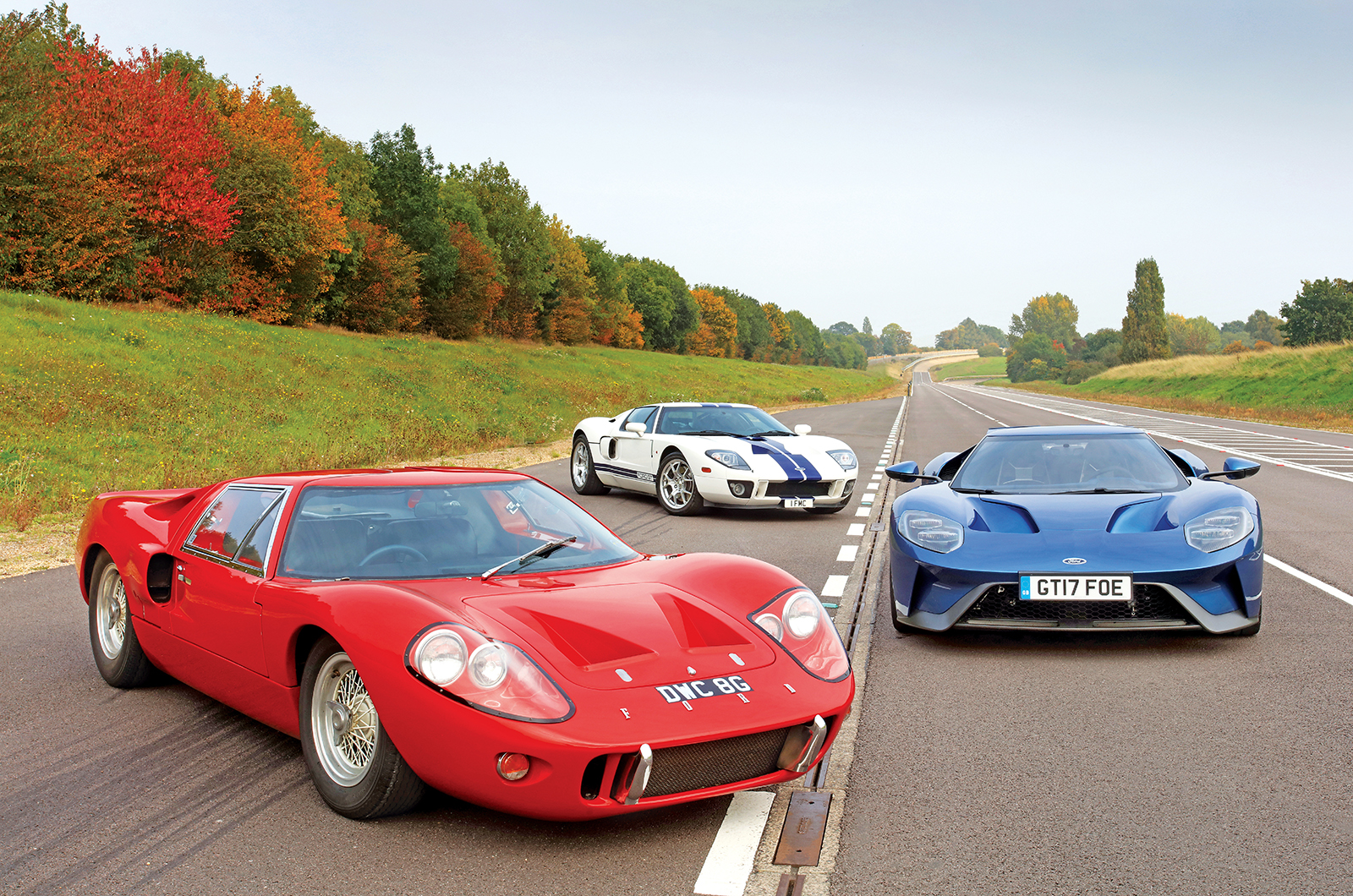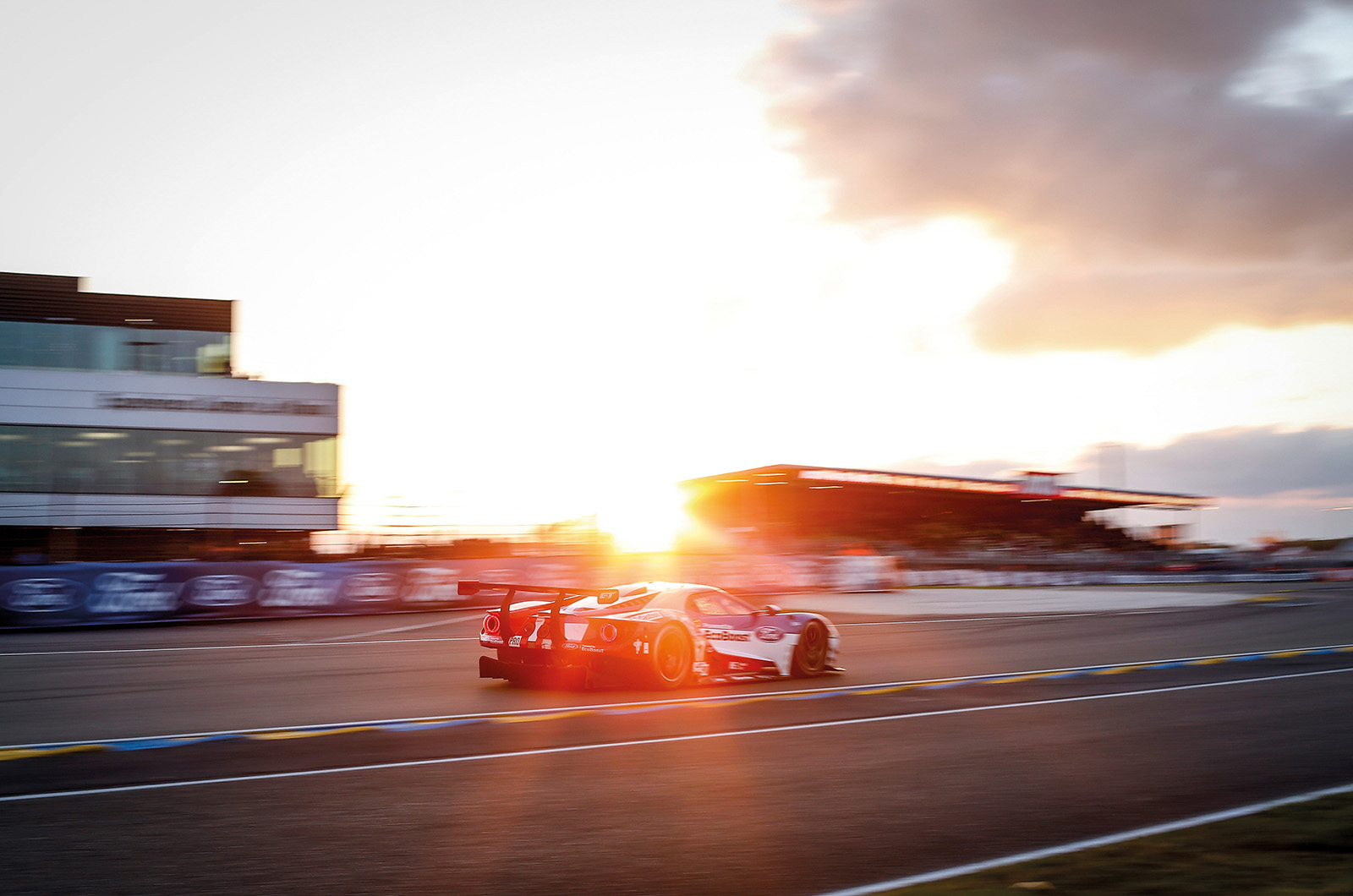By the time production of the GT drew to a close, 4038 examples had been built, eclipsing the minuscule production run of GT40s (just 31 road cars, including seven MkIIIs).
Yet, despite the commercial success, an encore was never a certainty. In fact, the new GT project nearly failed to see the light of day.
With the GTs side-by-side, you’d be forgiven for not immediately spotting the family resemblance – largely because the 2016 GT owes its appearance more to the wind tunnel than Magic Markers.
Ford had planned to celebrate the 50th anniversary of its Le Mans success by taking the new Mustang to La Sarthe, although it soon became clear that the pony car’s brick-like aerodynamic profile was never going to cut it in endurance racing.
The Ford GT of Eric De Doncker, Bas Leinders and Markus Palttala at the 2010 Le Mans 24 Hours
The idea was promptly canned, but a small group of stylists and designers forged ahead behind closed doors, eventually unveiling their slippery Le Mans contender – plus its road car sibling – to the top brass.
The GT slipped its dust sheet at the 2015 Detroit Auto Show, but one of its first major appearances came rendered with pixel-perfect accuracy in the racing simulator Forza Motorsport 6.
Before Ford had even started to take orders for the new GT – and long before journalists were able to put it through its paces – gamers had thrashed the new car to within an inch of its life, everywhere from the Nordschleife to Laguna Seca.
Forget Sellotaping boring press clippings and brochure shots to your bedroom walls: fans of the Blue Oval – the younger, wealthier breed that Ford was hoping to attract – could fly around the GT in 360º, zooming in on every detail from every conceivable angle.
What they found was a futuristic, wide and wildly aggressive creature that more resembled the new breed of Ferraris than its pastiche namesake.
The youngest car here has a slippery drag coefficient of 0.35cd, while out back the active rear spoiler pops up to increase downforce at speed and serves as an airbrake during rapid deceleration
The 2016 GT’s scissor doors might be a more elegant solution than in the model’s previous iterations, but clambering aboard still requires some dexterity thanks to an enormously wide sill – a by-product of the aerodynamically efficient teardrop cabin, which hugs airflow and reduces drag.
Unlike the Ferrari 458 Speciale and McLaren 675LT, which the GT was designed to take on, there isn’t much in the way of luxury.
The cockpit is sparsely appointed, with the lion’s share of controls affixed to the steering wheel. The carbonfibre racing bucket seats don’t move, all adjustment instead coming via the steering column and pedalbox, which slides back and forth via a weight-saving cloth strap.
The result is a fabulously ergonomic driving position, but one that becomes slightly cramped if you carry a passenger who sits close enough to measure your inseam thanks to the narrow cockpit.
The latest Ford GT's cabin is cosy and reflects is racing pedigree
Technologically, the 2016 GT represents a step-change for Ford, throwing out the big V8s of its predecessors in favour of a 3.5-litre twin-turbocharged and intercooled V6 capable of producing 647bhp.
It can propel the blue missile to 60mph in just 3 secs and on to a top speed of 216mph.
A carbonfibre tub ensures that the GT weighs less than a Ford Focus at just 1385kg, while futuristic inboard pushrod suspension comes with five selectable set-ups, ranging from Normal to V-Max – a low-drag setting for achieving top straight-line speeds.
Select Track mode and the car instantly drops 50mm to the deck, as hydraulic actuators compress the springs and the Multimatic spool-drive dampers switch to the least forgiving of three firmness settings.
At the same time the active rear spoiler – which pops up at 71mph in Sport mode – raises to the sky, ready to pile on the downforce and pin the rear tyres to the asphalt.
Gear selection is via a seven-speed dual-clutch transmission operated by column-mounted paddles in fully or semi-automatic mode.
We opt for the latter, clicking into first and tickling the throttle, which responds with a guttural growl as the GT powers onto the banked circuit.
The twin-turbo V6 develops more power than in Le Mans trim; LED lamps behind GT40-like fairings
Acceleration is brutal and turbo lag practically non-existent. Before you can even think about an objective review, you’re changing from second to third, eyes wide with astonishment at its face-contorting turn of speed.
Screaming at full throttle down the back straight lasts for mere moments before the imminent bend and its uneven, unsettling surface forces us to ease off at about 130mph.
You still come in too fast, working the cold carbon-ceramic brakes hard as it turns in, but the skittish buttock-clencher that you’re expecting never comes.
Even in the most aggressive mode, the coil and torsion-bar suspension is incredibly compliant, absorbing the worst of the bumps and knocks despite maintaining virtually zero body roll and a ride height of just 2¾in.
The fixed-ratio steering impresses, too. It’s assisted via an electro-hydraulic pump, but never feels too light, always offering plenty of resistance even when it isn’t loaded up.
A snappy 2.5 turns lock-to-lock ensures a quick response to the driver’s inputs, plus there are no dead spots or vagueness.
It’s lively, communicative and more fun to throw around than the 2005 model. But can it hold a candle to the MkIII?
Which of this evocative trio would you take home?
Comparing the three generations of GT is a difficult task.
The GT40 was an out and out racer, built with the sole aim of beating Ferrari at Le Mans.
In contrast, the 2005 GT was never meant for the race track, instead drawing a whole new cache of enthusiasts to the Blue Oval – a group with money, plus expectations of comfort, reliability and ease of use that are completely alien to owners of the company’s earlier model.
The final GT, meanwhile, represents a return to past form – a model designed primarily for racing, appearing in showrooms solely to help offset the cost of the competition programme. As a result, it is animalistic and uncompromising.
Joey Hand, Dirk Müller and Sébastien Bourdais won the LM GTE Pro class at Le Mans in 2016 in a GT, 50 years after Ford's 1-2-3
So which to take home? The first set of keys we hand back belong to the 2005 GT, which, though spectacular to look at, feels more like a muscle car than a mid-engined supercar.
It’s almost too easy to drive – the prodigious torque doesn’t reward working through the gears, and the engine, while hugely powerful, doesn’t shout like a big American V8 should.
Ultimately, it’s the first in the trilogy that holds the most cachet for devotees: the one capable of making your stomach do somersaults and the hair on the back of your neck bristle is the 1969 MkIII.
But if we had to have a modern in our two-car garage, there would always be a space for its 2016 sibling.
Unlike its rivals from Ferrari, Aston Martin and Lamborghini, the Ford is an almost unapologetic race car, shrugging off any playboy associations despite a ticket price that could make a dot-com billionaire blush.
It’s a sense of purpose that speaks to me, and to the spirit of the original GT40.
Photography: James Mann. Additional pictures: LAT Photographic
READ MORE
Le Mans star GT40 could make £9m at auction
Remembering Le Mans 1988
Fabulous Ford GT to lead Saturday’s £5.1m Silverstone auction
Greg MacLeman
Greg MacLeman is a contributor to and former Features Editor of Classic & Sports Car, and drives a restored and uprated 1974 Triumph 2500TC
